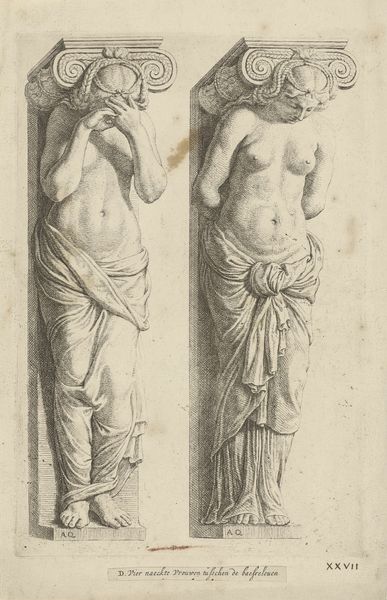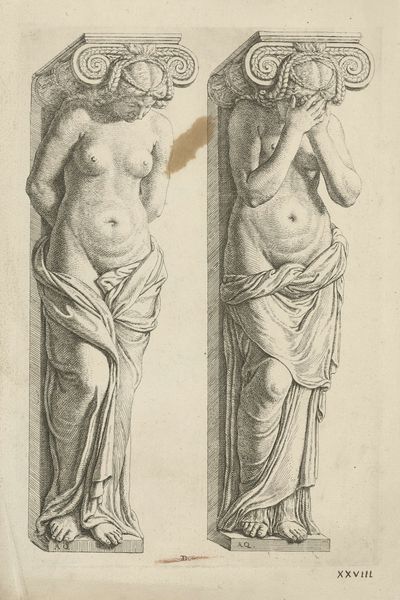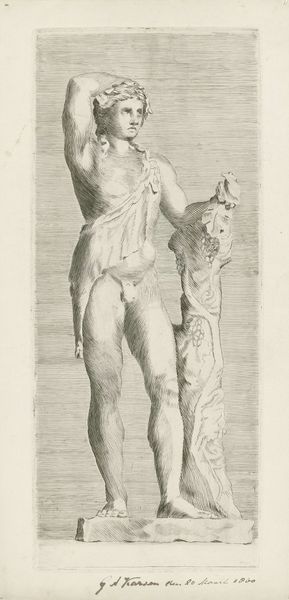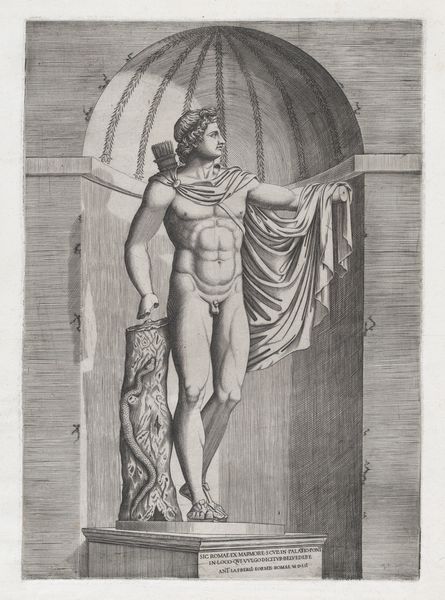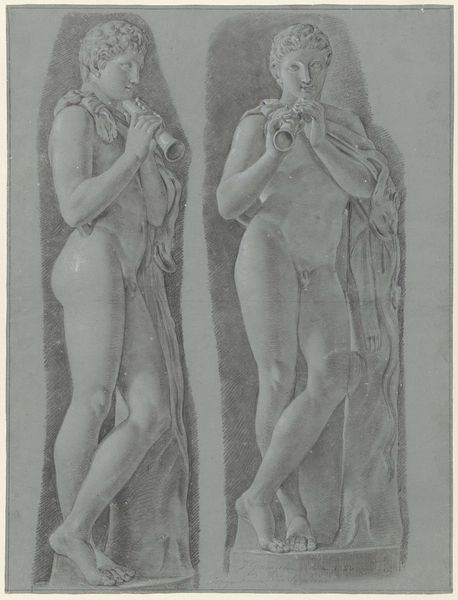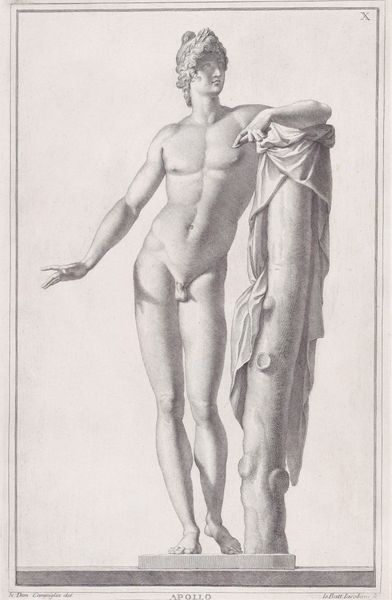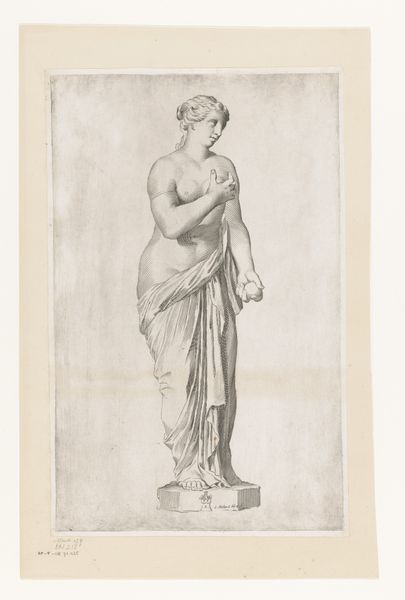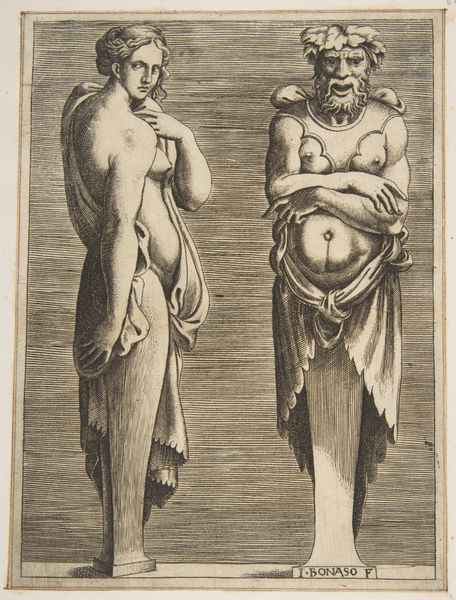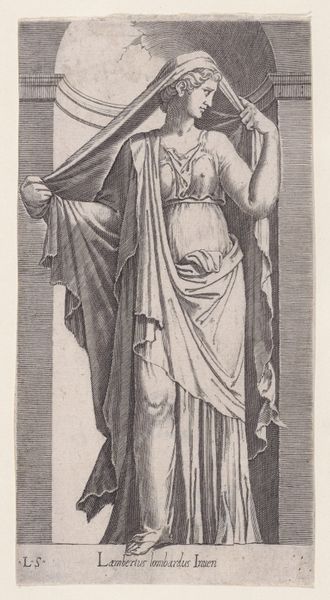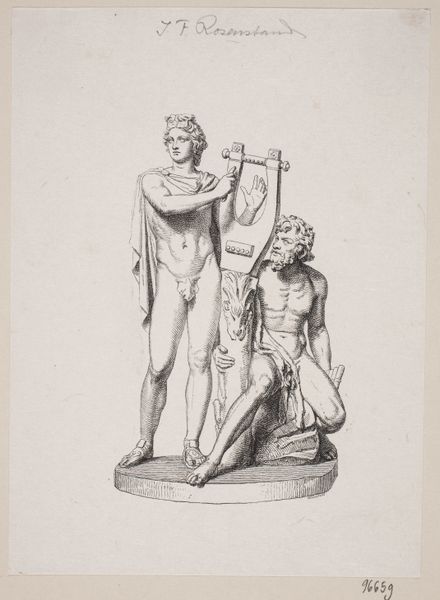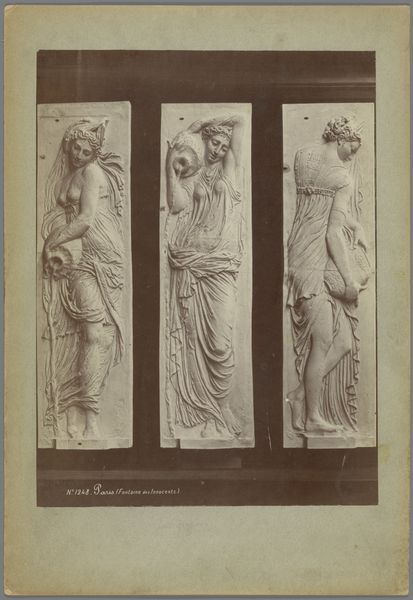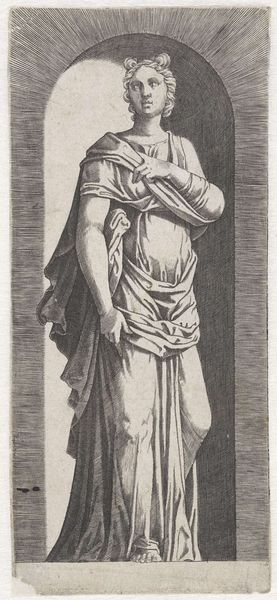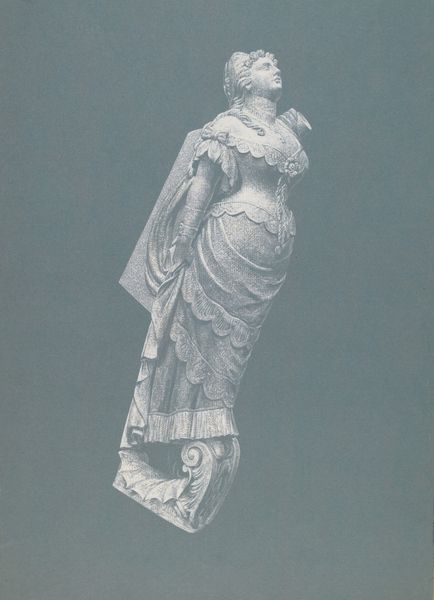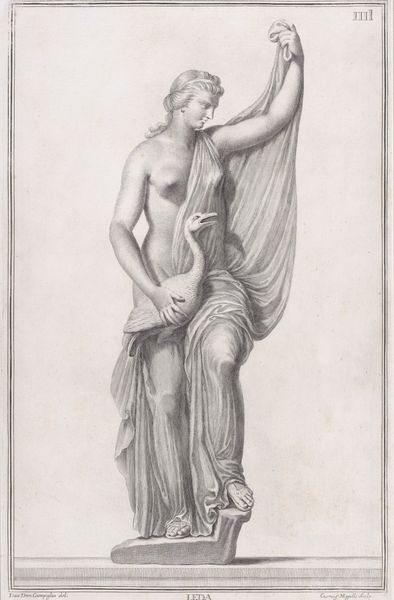
drawing, print, engraving
#
portrait
#
drawing
# print
#
figuration
#
form
#
11_renaissance
#
portrait drawing
#
italian-renaissance
#
nude
#
engraving
Dimensions: 8 1/16 x 5 3/16 in. (20.5 x 13.2 cm)
Copyright: Public Domain
Curator: What strikes you most about this engraving, "Young Women from 'The Hermae'," made in 1536 by Agostino Veneziano? Editor: Immediately, it’s the stark contrast of form. The two figures, rendered almost monochromatically, display a remarkable range of textures achieved simply through line work. It has this classical and austere feeling but at the same time also projects sensuality through details like the fabrics. Curator: Indeed. Veneziano situates these women within the visual vocabulary of the Italian Renaissance, deeply influenced by classical antiquity, particularly in its portrayal of idealized forms and the decorative use of herms. The figures represent an interesting interplay between sculpture and human form. Consider that these images circulated at a time when societal roles were being renegotiated against humanistic ideals, leading to questions regarding agency, representation, and objectification. Editor: Right, it is the detail in their faces—these nuanced portraits feel very immediate, but their presentation does remove their presence and agency somewhat. The drapery on both is masterfully rendered, falling in elegant folds that highlight the artist's grasp of anatomy and classical motifs, it reminds us about that tension between life and artifice in idealized representation. The way they hold themselves and present is an indication of how art, then, was beginning to blur boundaries. Curator: These visual allegories spoke volumes about societal expectations, offering artists platforms to contemplate the cultural scripts assigned to gender and virtue. Through studying pieces like "Young Women," we reveal how social ideologies have historically manifested themselves through visual languages and gender dynamics. Editor: This close study allows us to fully appreciate not only the artistic merits, which are certainly present, but also grasp how it fits into a dialogue, perhaps even creating the tension that informs art itself. The clarity of line and tone produces striking details. Curator: Precisely, acknowledging how images engage with cultural ideologies illuminates richer and complex meaning than might first meet the eye. Editor: Yes, you've highlighted the necessity of viewing artwork through an informed social lens, even while reveling in form and structure.
Comments
No comments
Be the first to comment and join the conversation on the ultimate creative platform.
